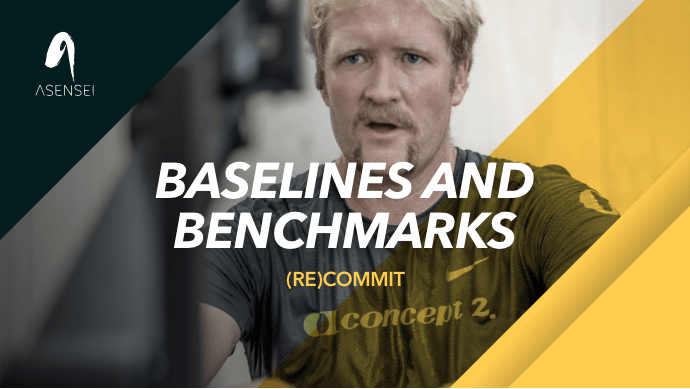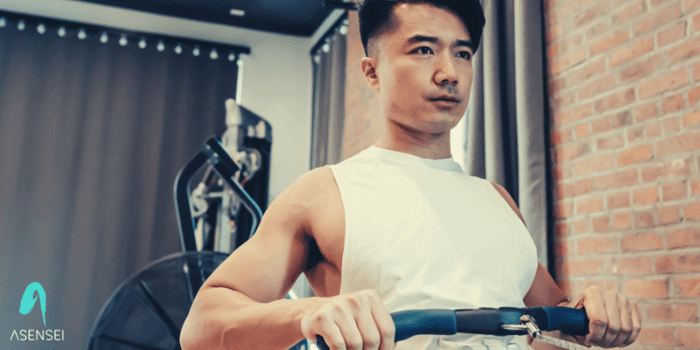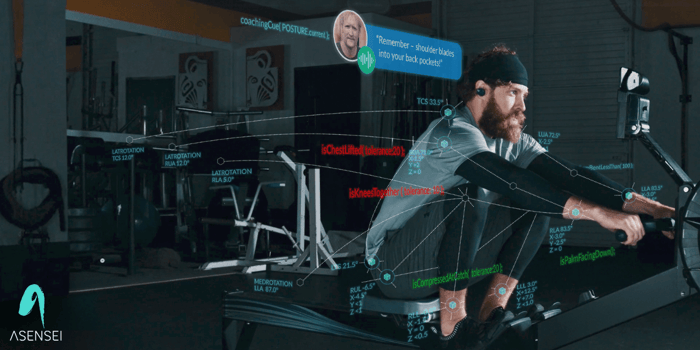Finding 'Flow' whilst both training and competing is one of the biggest and most important challenges an athlete can face. Whether you’re an Olympian like Eric Murray or a novice training towards your first 2000m race, it’s important to introduce it to your indoor rowing practice.
Table of Contents
What Is The Flow State?
So, what is Flow? Flow is a state where you’re so engrossed in the activity that you completely lose yourself, any sense of time or urgency and anything that holds you back. It helps you manage your fears and anxieties around competing and perform to your top potential.
Practicing flow helps you get rid of any nerves and doubts before you’ve started competing, you bring all the enjoyment you feel whilst training into the ‘arena’. Just like you practice all the skill and strength required to compete, training your muscles so that they memorise the movements and you move almost automatically, you must practice and train your brain to automatically go into flow state. The mind, not the muscle is the most important athletic asset.
Indoor rowing is well suited to flow state, the repetitive nature of the rowing stroke allows you to find a groove and the constant conditions (no wind, current, slopes or traffic) mean you can more easily tune out external factors and really focus on your rhythm and technique.
A lapse in concentration at a key moment often leads to lost time. Practice being in the moment and completely present in your training and competitions. Enjoying it, breathing through the pain, and feeling the rush. Focus on the process.
Eric Murray discusses how to find your flow state on an indoor rowing machine
3 Tips for Finding Flow in Indoor Rowing
1. Positive Mindset - Love what you do
Approaching workouts with a positive mindset is really important for finding flow, and when done correctly research shows that a positive mindset can also help you improve your performance. A number of articles and books have looked into the effect of the human mind on sporting performance and concluded that your limits are at least in part a function of your mental approach.
So when starting a workout or a training session, try and give yourself a little positive mental talk before you start, even if you are having a tough day. Phrases like "every minute I train is making me fitter" or "I am going to be my best today" can make a difference. And do the same when you are done, regardless of whether you hit your targets, focus on the positive and remind yourself that "my training today will improve my workout tomorrow".
If you don’t enjoy the activity you’re training for, you will never achieve flow. You’ll just be going through the motions until you’re done. Choosing a sport/exercise that you genuinely enjoy and are good at will make massive strides towards achieving flow state.
2. Find Rhythm But Push Yourself
If you make a workout too easy you may well find your mind wandering, but if it's too hard and you will struggle to relax. So you should aim to find a sweet spot for effort and establish a stable rhythm in your stroke.
Aiming for achievable yet ambitious goals will put you in a great mindset to go beyond what you’re used to. You can say ‘I can do this. I know I can do this.’ A massive part of success in sport is knowing your own performance boundaries and pushing yourself just beyond that mark.
This is one area where tools like the asensei rowing app really comes into their own as a training tool. asensei knows your capabilities by monitoring all aspects of your rowing and sets you goals that are just ambitious enough so you can focus on improving.
3. Manage Your Stress
When you have other external issues, stresses, and anxieties – they can have a negative impact on your performance and mindset. Making sure you keep a balance of training/rest and allowing ample time to recover and feel good about yourself will translate into your performance.
A structured training plan, done correctly will help to ensure that you have ample time between workouts and a variety of different sessions to keep you mentally focussed.
Conclusion
Flow state is where you’re so engrossed in the activity that you completely lose yourself, any sense of time or urgency and anything that holds you back and it is a really beneficial place during a rowing workout. Indoor Rowing lends itself well to flow state because of the rhythmic nature, soothing sounds and lack of external distractions that can be experienced when rowing on water or performing other outdoor activities. Setting yourself achievable goals and removing stress-inducing distractions will also help you to lose yourself in the rowing motion.
Finding your flow state and saying there for as long as possible will make peak performance feel great!
Articles in the (RE)COMMIT Series
If you enjoyed this article why not read the other articles in the series that are designed to complement the (RE)COMMIT 2000m training plan which is best delivered via the asensei rowing app.
#1 Connected Coaching with asensei
#5 Finding Flow (this article)
DOWNLOAD ASENSEI TODAY
|
asensei is free to download and you can trial the first 3 workouts in the (RE)COMMIT program and let Eric calculate a 2k time that he can coach you to achieve in only 6 weeks. All you need is an iPhone and access to an asensei Compatible rowing machine from Concept 2, WaterRower or FluidRower with a bluetooth capable monitor. |




